“If restoration isn't done properly, it could be problematic.” - An interview with Lucinda Kirkpatrick by BIO-CAPITAL
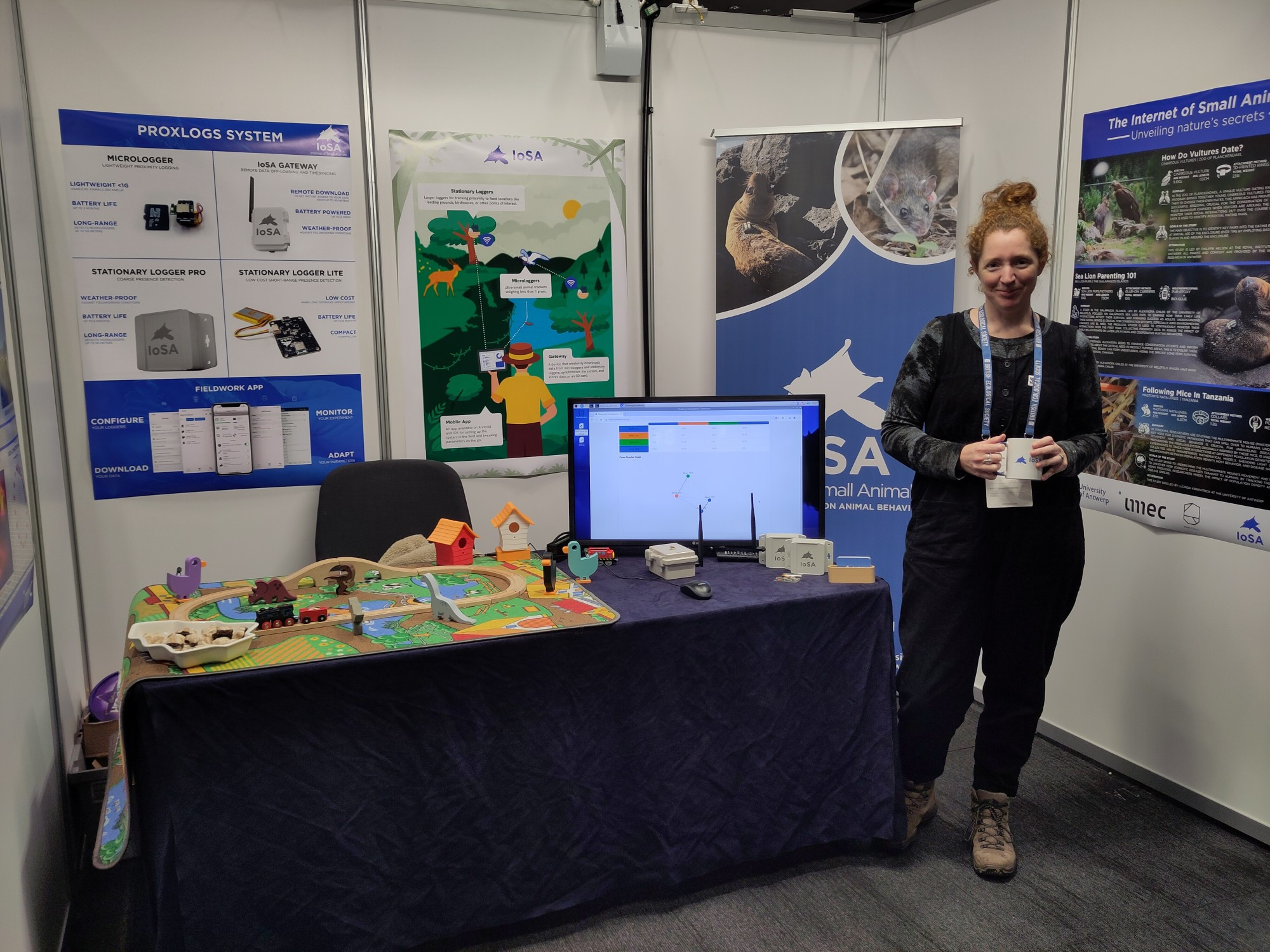
Interview and blog post adaptation by Thomas Stollenwerk (BIO-CAPITAL). Originally published on Bio-capital.eu
The RESTOREID project aims to understand the links between biodiversity, restoration, and disease spillover. Lucinda Kirkpatrick is the coordinator of the EU-funded initiative and a Lecturer at the University of Bangor. She met with Thomas Stollenwerk (Oikoplus) online and gave him a fascinating insight into the project work.
Thomas Stollenwerk: Lucinda, RESTOREID explores the link between biodiversity loss and human health. How did the project come about?
Lucinda Kirkpatrick: I became interested in spillover risks in restored environments while working as a research fellow at the University of Antwerp. My research focuses on how human impact drives animal movement, behavior, and, ultimately, disease transmission. The key question is: How do our actions influence disease spillover events?
Thomas Stollenwerk: What do you mean by spillover events?
Lucinda Kirkpatrick: Animals naturally transmit pathogens among themselves, but some can jump to humans. While there’s growing interest in disease surveillance, we must understand how human activities contribute to spillovers. I’ve worked extensively with bats, which often carry harmful diseases—not because they are to blame, but because human interference increases the risks.
Thomas Stollenwerk: How does this relate to environmental restoration?
Lucinda Kirkpatrick: After COVID-19, there was a rush to restore environments with the assumption that it would automatically reduce disease transmission. However, there’s little empirical data supporting that claim. Landscape degradation impacts species diversity at both the community and individual levels. Simply restoring an area does not guarantee lower spillover risks.
RESTOREID: Sampling and Testing work in Uganda
Thomas Stollenwerk: How are biodiversity restoration and spillover risks interlinked?
Lucinda Kirkpatrick: A diverse ecosystem naturally regulates disease by preventing any one species—or its pathogens—from dominating. When biodiversity declines, common, fast-reproducing species persist, which often tolerate multi host infections, and can shed more pathogens. The same applies to parasites: the ones that thrive are those best at switching hosts, making spillover to humans more likely.
Thomas Stollenwerk: Does biodiversity loss increase the risk of animal-to-human pathogen transmission?
Lucinda Kirkpatrick: Yes. Human activities degrade landscapes and increase human-wildlife interactions. The surviving species tend to be those comfortable around humans, creating the perfect conditions for pathogen transmission.
Thomas Stollenwerk: Are there examples where restoration has increased spillover risks?
Lucinda Kirkpatrick: Yes. In Brazil, changes in forest structure increased yellow fever transmission by altering interactions between howler monkeys, mosquitoes, and humans. If forest cover remains below 30%, yellow fever rates rise; beyond that threshold, they decline. Similarly, in Australia, deforestation reduced native fruit trees, forcing bats into urban areas with ornamental fruit trees. This increased their contact with horses, which then transmitted the Hendra virus to humans. Well-intentioned actions can sometimes create new disease pathways.
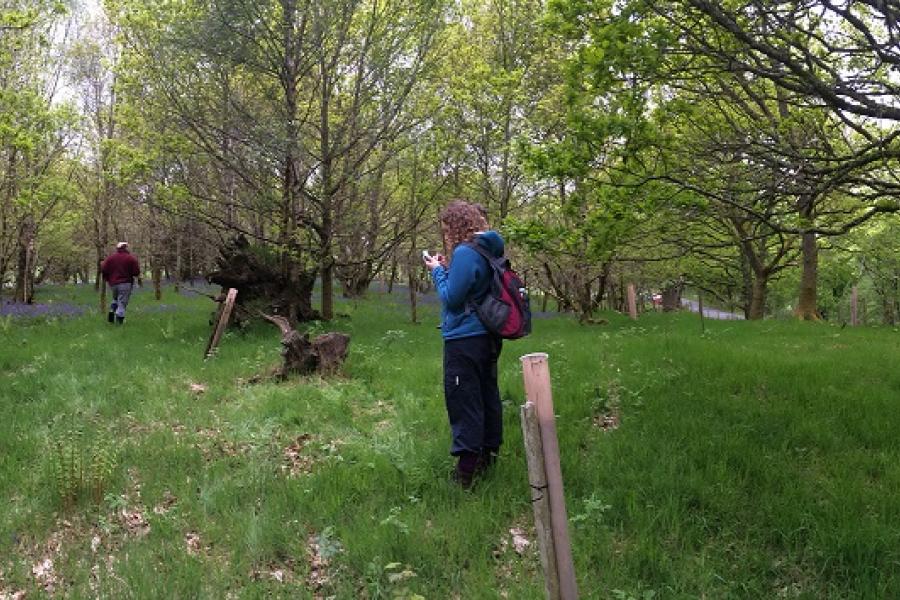
RESTORIED Surveying Scottish woodlands by Kevin Watts
Thomas Stollenwerk: How does RESTOREID tackle these issues?
Lucinda Kirkpatrick: We study what happens when environments are restored. Restoration takes time, and the outcome isn’t a return to a pristine state but a new ecosystem. If restoration efforts allow only a limited subset of species to persist, the spillover risk remains. We need to build truly functional, biodiverse ecosystems.
Thomas Stollenwerk: Is there evidence linking restoration to pathogen spread?
Lucinda Kirkpatrick: Poorly executed restoration can increase spillover risks. Restored areas attract human activity—tourism, recreation, hunting—so contact between people and wildlife remains high. Additionally, restoration itself begins with disturbance, creating potentially risky conditions. RESTOREID aims to uncover how biodiversity changes during restoration impact disease risk.
Thomas Stollenwerk: Your project includes case studies across Europe and Africa. What role do these sites play?
Lucinda Kirkpatrick: We carefully selected sites based on available long-term data. Some have been restored for 10, 20, even 250 years. We don’t conduct active restoration but compare biodiversity and pathogen diversity in restored areas versus degraded landscapes and pristine reference sites.
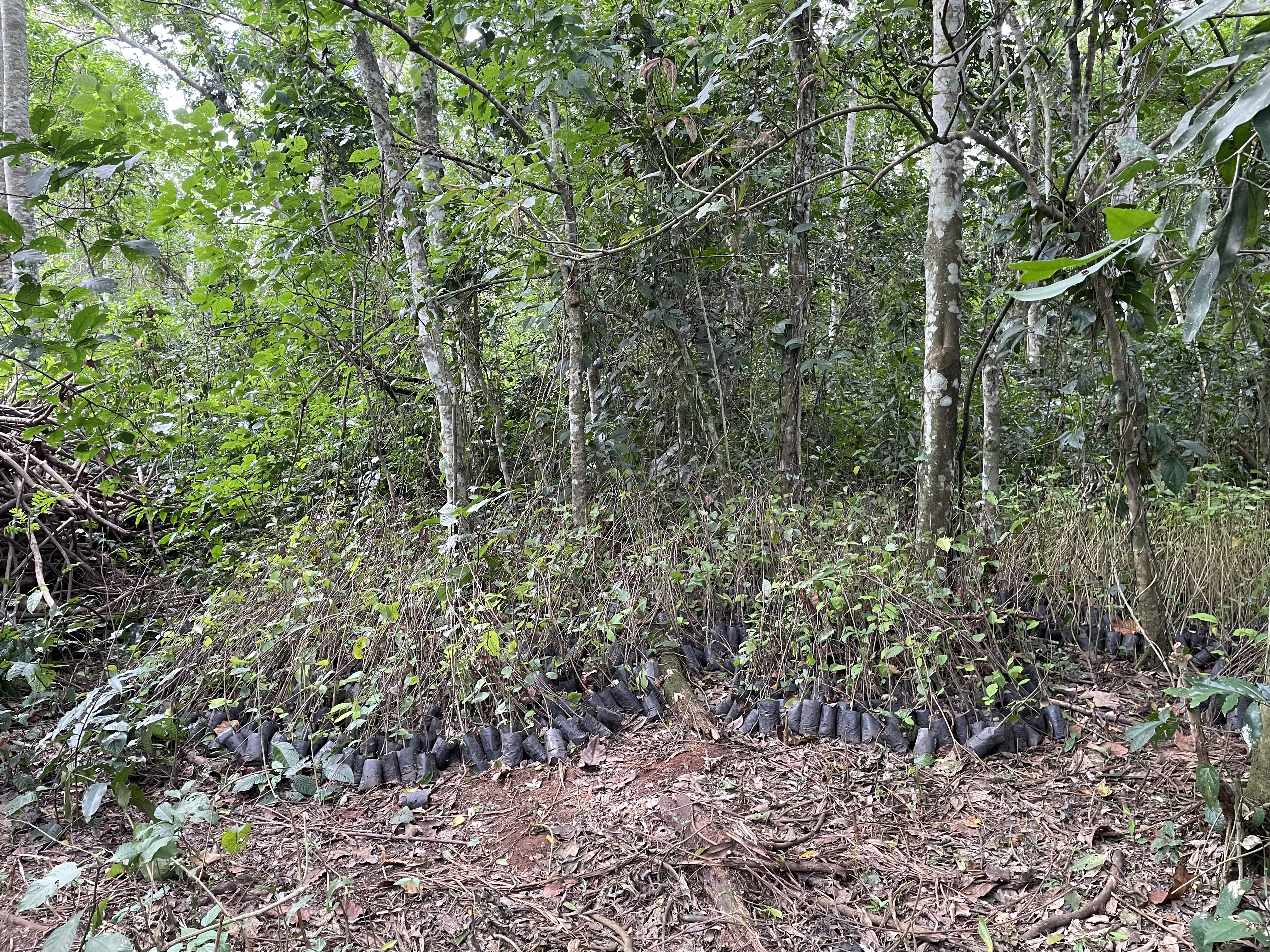
RESTOREID Project: Restoration in Uganda
Thomas Stollenwerk: How do you study these ecosystems?
Lucinda Kirkpatrick: We use acoustic monitoring to capture soundscapes rather than identifying individual species. This helps assess functional diversity. In regions like Côte d'Ivoire and the Democratic Republic of Congo, where biodiversity data is scarce, this method provides valuable insights. We supplement this with environmental DNA (eDNA) analysis, collecting DNA from vegetation swabs. Additionally, we employ a novel technique using carrion flies. These flies travel up to 200 m and feed on carcasses and feces, picking up DNA from various species. By trapping and analyzing them, we gain a unique perspective on local biodiversity.
Thomas Stollenwerk: Are these established or innovative methods?
Lucinda Kirkpatrick: Some are well-established, but techniques like using carrion flies and large-scale soundscape analysis are quite new. Eventually, we aim to develop an online tool where users can upload sound recordings and receive biodiversity scores.
Thomas Stollenwerk: How do you assess potential pathogen presence?
Lucinda Kirkpatrick: We trap small mammals to study pathogen communities, cross-referencing this with biodiversity and restoration age. This helps us identify relationships between ecosystem changes and disease risk.
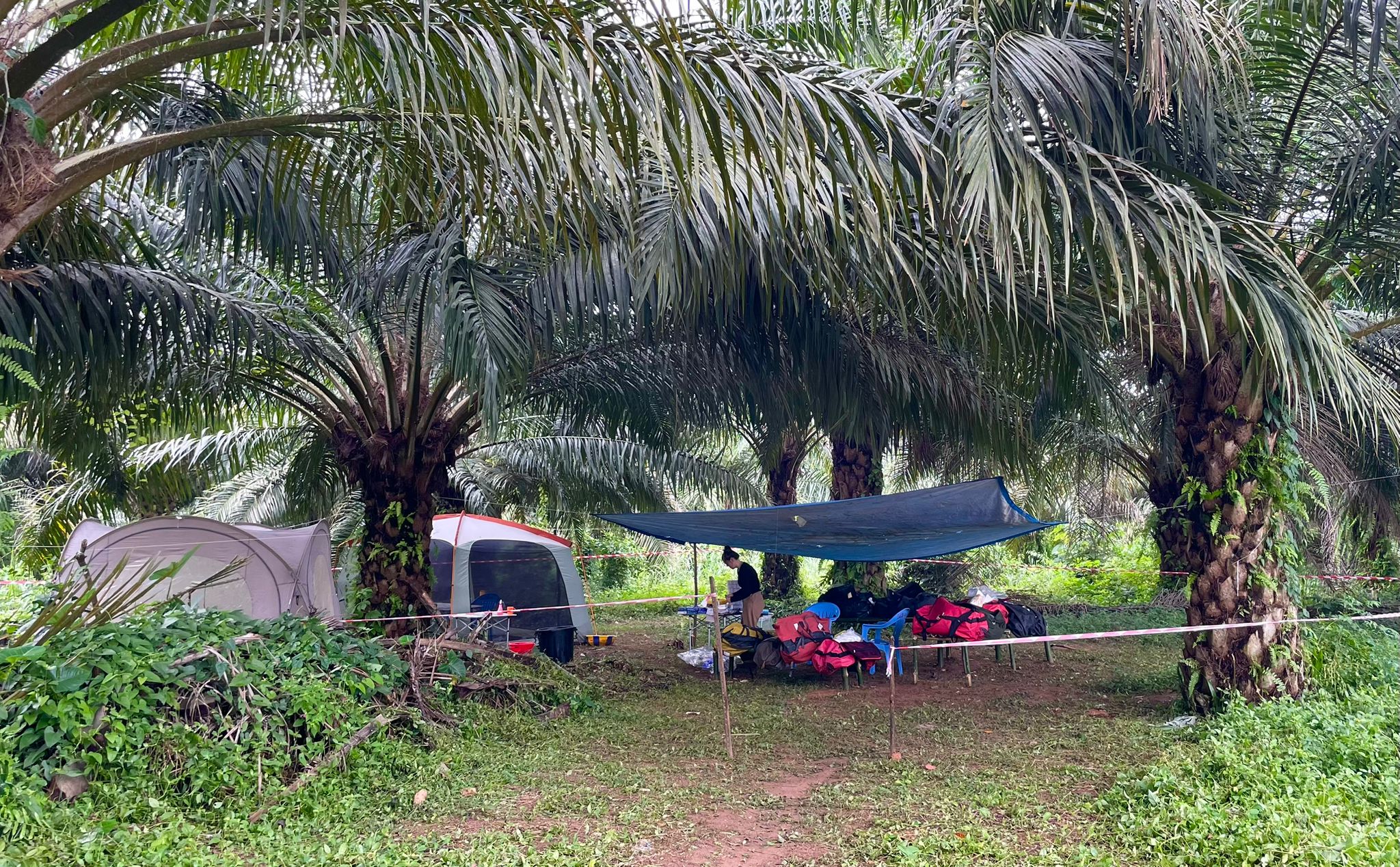
RESTOREID Fieldwork in DRC, by Cato Vangenechten
Thomas Stollenwerk: Could RESTOREID help reduce the risk of animal-to-human disease transmission?
Lucinda Kirkpatrick: Yes, through our mathematical model predicting how restoration impacts disease transmission. By analyzing species compositions and real-world data, we’re building a decision support tool to guide restoration efforts. This tool will account for spatial context, connectivity, and restoration size, helping minimize disease risks. For instance, restoring fragmented patches might increase risk, while restoring well-connected areas could reduce it.
Thomas Stollenwerk: I know, It can sometimes be difficult not to lose sight of the overall project idea in such complex projects. What is the overarching vision of RESTOREID?
Lucinda Kirkpatrick: Restoration is complex. If done improperly, it could be problematic. But if leveraged correctly, we can create healthy landscapes that naturally regulate disease, making ecosystems more resilient for both wildlife and humans.
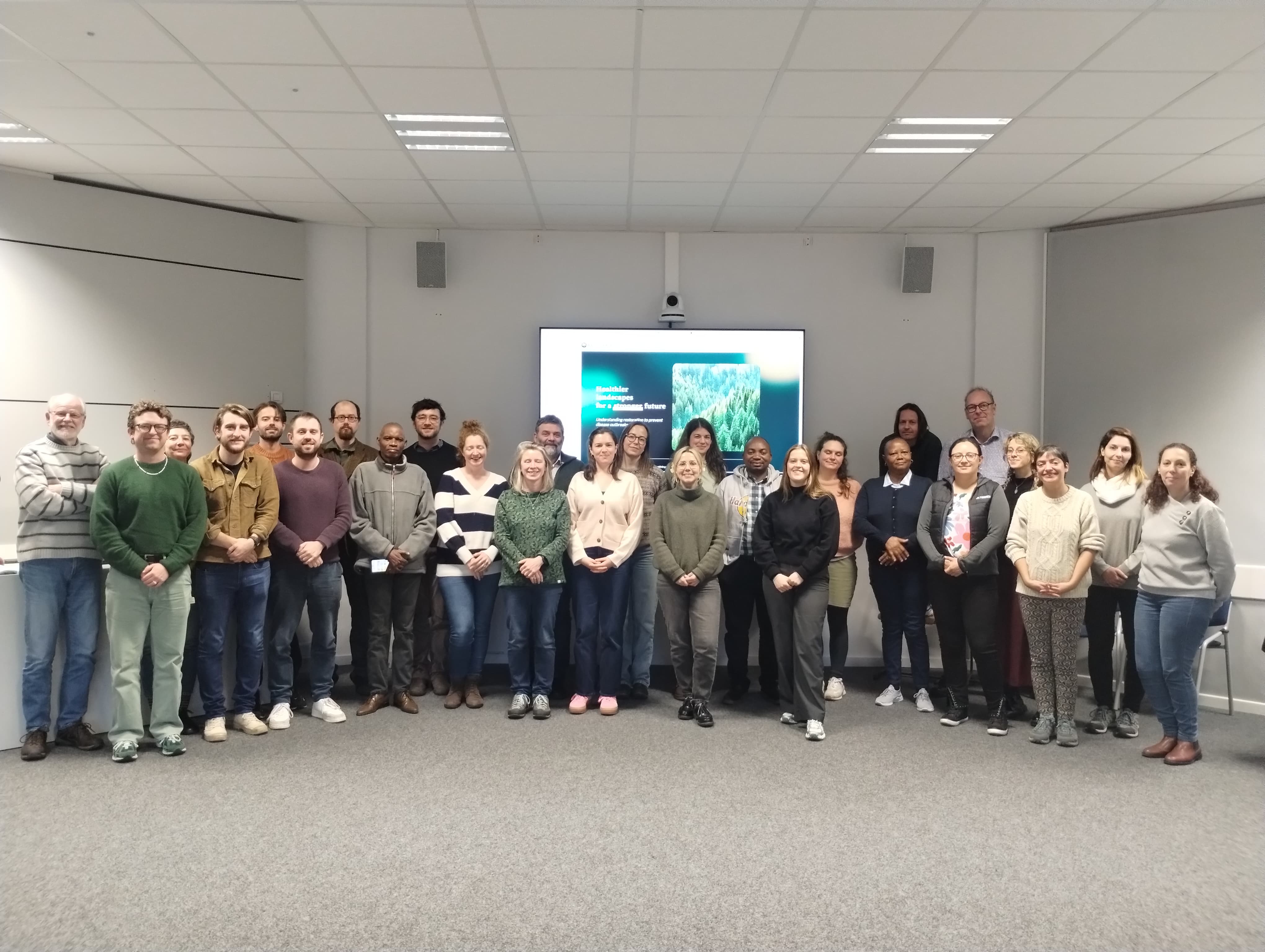
RESTOREID Consortium at Antwerp University during their first annual meeting (Jan 2025)

